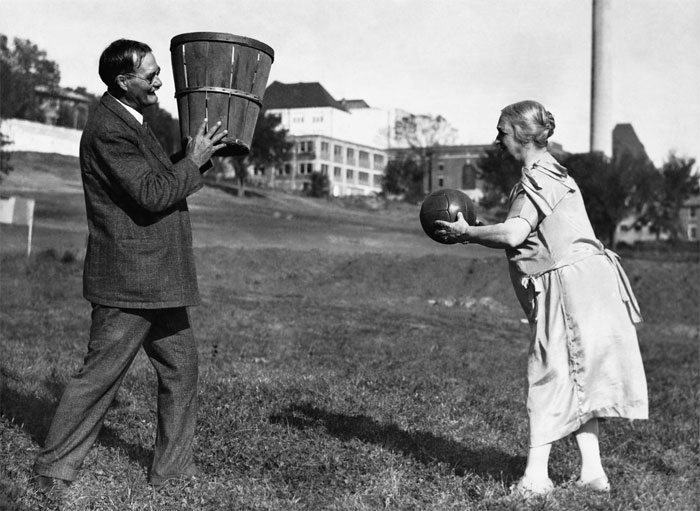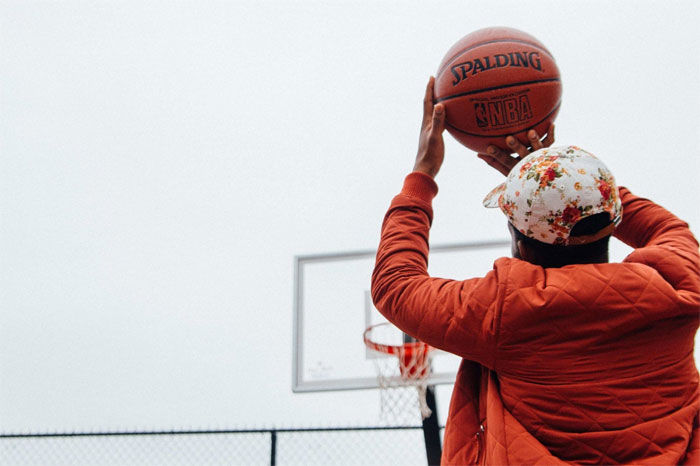Basketball is one of the most popular sports in the world. The game attracts tens of millions of viewers every year, and the NBA rakes in billions in revenue.
Besides the professional courts, it's popular in street games and a common sport in K-12 schools. There are even dozens of movies about basketball.
With many people worldwide playing the sport both professionally and casually, there are no signs of its popularity decreasing.
But while players and fans alike knowing the rules of the game inside out, few people know the answer to a question that is integral to the history of this phenomenal sport: Why are basketballs orange?
The Origins of Basketball
Before delving into the reasons behind why are basketballs orange, let's briefly cover the history of the game.
James Naismith invented basketball in 1891. At the time, Naismith was a second-year graduate student at Springfield College in Massachusetts.

Naismith used two peach baskets and a soccer ball as the initial equipment. He then wrote up 13 rules, determining that the game called for two teams of nine players.
Word of the new game spread like wildfire across US campuses. Since then, the sport has only grown in popularity, becoming one of the most beloved games of all time.
The Introduction of the Orange Basketball
The color of a basketball may seem like a trivial factor in the grand scheme of the game, with people questioning why are basketballs orange.
You might assume the color of a basketball was random. After all, it could just as easily have been blue, green or any other color. But in fact, a particular reason lay behind the choice.
The reason basketballs are orange is visibility. The color only came into effect in the late 1950s. Before this time, basketballs were a generic brown color.

Tony Hinkle, Butler University's head basketball coach, brought the poor visibility of the brown color to everyone's attention. He proceeded to change the color of the ball, so players could see it better during games.
Basketball is a fast-paced game, so trying to keep track of a dull-looking brown ball on a predominantly brown court can make for poor visibility issues.
The new color changed to orange after much deliberation, making for a much easier and visible game.
The Debut of the Orange Basketball
After Hinkle decided upon orange being the new color of the basketball, he worked with the Spalding Company in 1957 to develop the new streamlined and modern version of the ball.
It wasn't until 1958 that the new orange basketball made its debut at the NCAA finals in Louisville, Kentucky.
The Spalding Company was also the first business to produce basketballs for official competition use. Since 1983, the company has been the maker and distributor of the official NBA game ball.
Can You Get Basketballs in Other Colors?
While orange is the official color, you can also find these balls in other colors, including white, green, and red.
However, these shades are not as predominant as the official orange as they are not permissible for professional NBA games.
It's interesting to note that even though the basketball color changed to orange in 1958, the American Basketball Association (ABA) used a blue, red, and white ball from 1967 to 1976.
However, the multicolored basketballs proved to be very distracting during games. In 1976 when the ABA merged with the NBA, the league discharged and replaced the multicolored ball with the official orange.
Besides eliminating distractions, the choice of orange had other benefits. Because the orange balls are only one color, they didn't strain the players' eyes as much, making for a much fairer game.
Final Thoughts
Even though basketballs have been traditionally orange since 1958 in professional use, it doesn't mean that you can't take a bold colored ball to casual games.
However, with the orange color being so significant and recognizable to the game, many people, including amateur players, prefer to play with them.
Thanks to Hinkle's decision back in 1957 to change the color to an orange basketball for increased visibility and fairer games, the game has been better.

